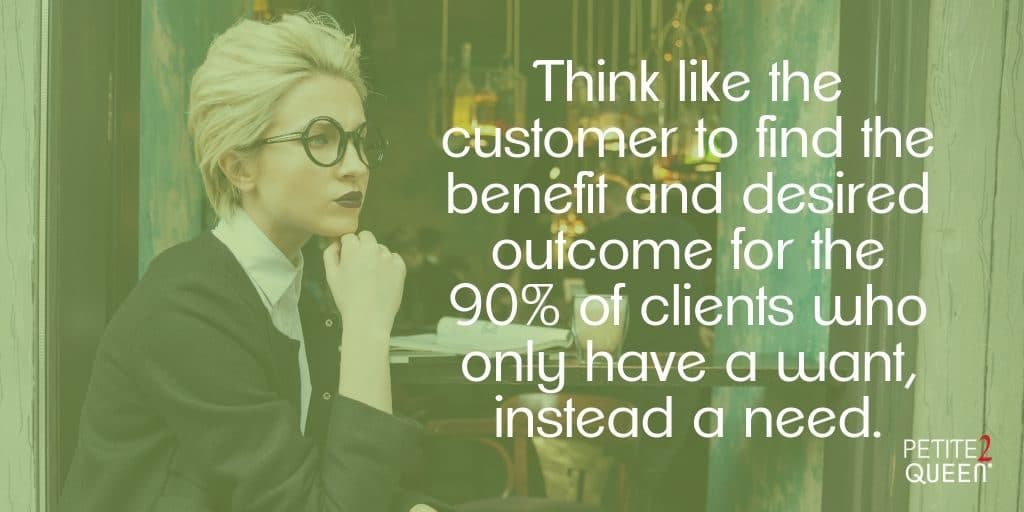What is a successful sale? How do you increase your success rate? It’s all about matching your solution to a customer’s need, providing something they lack, or fulfilling a desire or want. As you work through the discovery process, you are identifying buyer motivation. The prospects with a need are actively seeking suppliers with the product or service that meets that objective. In my experience, these “ready to purchase” customers are few and far between, while the prospects with an interest or want will make up the bulk of your prospects. This is the 90/10 rule.
The 90/10 Rule
Understanding the 90/10 rule is the foundation of effectively building stronger client relationships and closing more sales. When 10% of your prospects have a need, you must think like the customer to capture the perceived benefit and desired outcome for the 90% who only have a want. Of course, this is important for the clients with a need, too. However, it assumes a greater significance to motivate the bulk of your prospects to a buying mindset. It’s imperative in your long-term success.

There are 7 key categories of buyer motivation:
- Comfort/pleasure
- Avoidance of pain
- Profit/gain
- Preventing loss
- Belonging
- Cause affiliation
- Pride/prestige
Most buyers have more than one motivation driving them. The quality, time, and cost of your product or service are factored into the avoidance of pain, profit/gain, and preventing loss categories of buyer motivation. These three categories are also the primary drivers for B2B sales.
Determining Who’s Who
Invest an hour to review your current prospect list. Divide the list in two: those where the client is aware of their need and everyone else. Now break down each of these two groups further. Ask how the prospect will be impacted and how they will benefit from your solution. Put yourself in their shoes, their perspective. What’s in it for them? Making the connection of the primary buyer motivations, along with influential motivations, for each prospect is the key to developing a communication road map.
Once completed, you are able and ready to appeal to your buyer motivations for each of your prospects. Run through this exercise with each new introduction and potential client. Adapt your discovery questions to zero in on the problems you can solve, how are they motivated, and what is an emotional trigger. You are able to tailor your sales approach to match their motivations and effectively project the positive outcomes of your help.

Turn a Want into a Need
Incorporate emotional triggers that align with your buyer motivations in your communications. The language you use, tone, and appearance are an effective means to target your audience. It builds a bridge to enable you to share who you are and how you can help them. When you think like the customer, you close the gap for the 90% of your prospects. You’re quickly identifying what they lack and creating a desire for your products and services.
When you understand your buyer motivations and apply emotional triggers, you will close more sales and help more customers.
Resources

Lynn Whitbeck is the co-founder and President of Petite2Queen. She is focused on identifying and evaluating opportunities for women at work, helping them define their personal roadmap. She dedicates herself to delivering tools and insights, embracing visualization of the big picture, and identifying and implementing the minutiae of detail. Lynn aims to share lessons learned along her journey and enable positive uplift for women.

